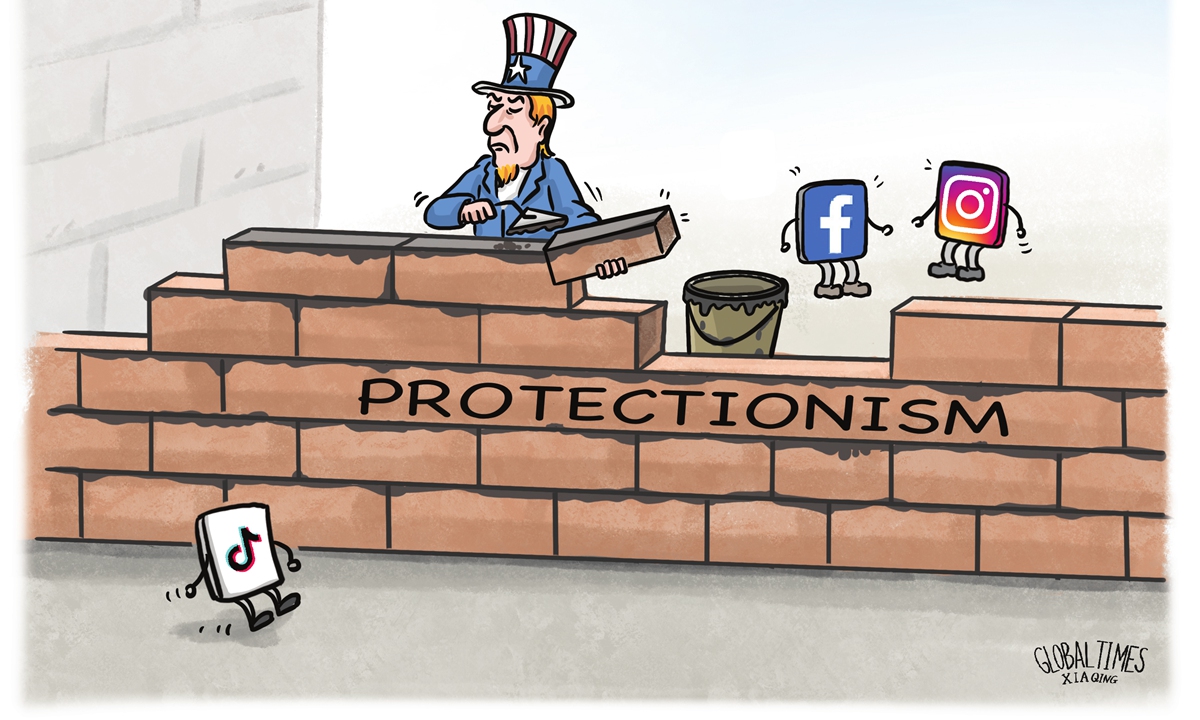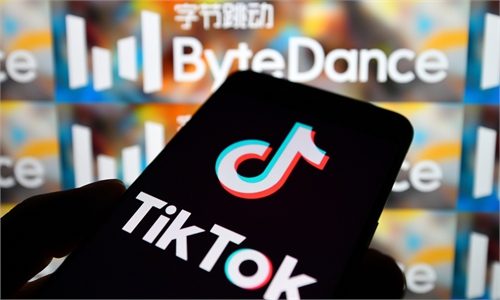US suppresses TikTok for grabbing international market

Illustraion: Xia Qing/GT
The US White House Office of Management and Budget (OMB) on February 27 asked US federal agencies to remove TikTok from their devices within 30 days.According to OMB, the decision was made to keep US data safe through this program designed by China's ByteDance. The US Congress also banned government employees from using TikTok on their devices for this reason in a bill passed in late December last year.
This is just the beginning. A proposal for a broader ban on Tiktok will soon be introduced in Congress. Their reasoning has not been substantiated in any way. All allegations are made using the word "might," ByteDance has also repeatedly stated that the Chinese government has no control over its data, or access to it.
The real concern in the United States is the vast internet market that TikTok occupies with its unique technology and the enormous profits it creates.
According to eMarketer, 45.3 percent of US social network users use TikTok, compared to 24.2 percent worldwide. We Are Social's latest report released in January said TikTok has over 1 billion active users worldwide and is the sixth most used social platform.
TikTok's revenues were $4.697 billion in 2021 and reached $9.4 billion in 2022. Although it still has a gap with Google, Facebook, etc., its growth momentum is rapid. It directly threatens the advertising revenue of several major social networks in the US.
It is foreseeable that if the US does not go after TikTok and curb its growth in the relevant market, several leading US high-tech and networking companies will be affected to varying degrees.
This is a so-called competition by The Biden administration. Its National Security Strategy report emphasizes that the next 10 years will be a "decisive decade" for the US in its battle with China and that the overall goal of the US strategy toward China is out-compete, of which the most critical is the global market.
The internet market will be the fastest-growing market in the future. The prominent feature of the market is internationalization, and any enterprise that wants to be bigger and stronger in this market must focus on the global market sooner or later. Therefore, Chinese and American companies in this field will collide fiercely.
This competition initiated by Washington is shown at two levels, one is to curb high-end technology exports to China, to weaken the competitiveness of Chinese manufacturing and technology, to disrupt the supply chain and industrial chain, and at the same time to make every effort to upgrade American high technology so that Chinese technology cannot compete with America in the global market.
Another level is to take advantage of human rights and security issues to join hands with allies to squeeze made-in-China and Chinese technology out of the international market.
The US crackdown on Huawei, TikTok, etc., is on two levels simultaneously. We see the decoupling of the industrial and supply chains now. It soon be reflected in the regulation, guidance, and fierce competition for the global market.
However, today's globalization has deepened and expanded. The global market cannot be entirely controlled by the US.
Although the United States, with its largest consumer market and leading high-tech in the worldwide market has solid competitiveness, over the past two or three decades, America's abilities have declined and are being replaced, meaning that not only China, but many other countries are becoming competitive in the fields of manufacturing and technology
China, of course, has the most competitive advantages among these countries. In the low and mid-range areas, Chinese manufacturing dominates the global market in many product areas, and is seeking breakthroughs in some high-end areas.
Thus, US containment of TikTok is just the beginning, meaning that there will be one nasty battle after another between Chinese manufacturing and technology and American manufacturing and technology in the global marketplace.
China's choice can only be to expand and open its consumer market further and support the outward flow of Chinese manufacturing and technology, at the same time, upgrading high-tech and manufacturing industries to create more new products and win a broader global market.
The author is a senior editor with People's Daily, and currently a senior fellow with the Chongyang Institute for Financial Studies at Renmin University of China. dinggang@globaltimes.com.cn. Follow him on Twitter @dinggangchina



